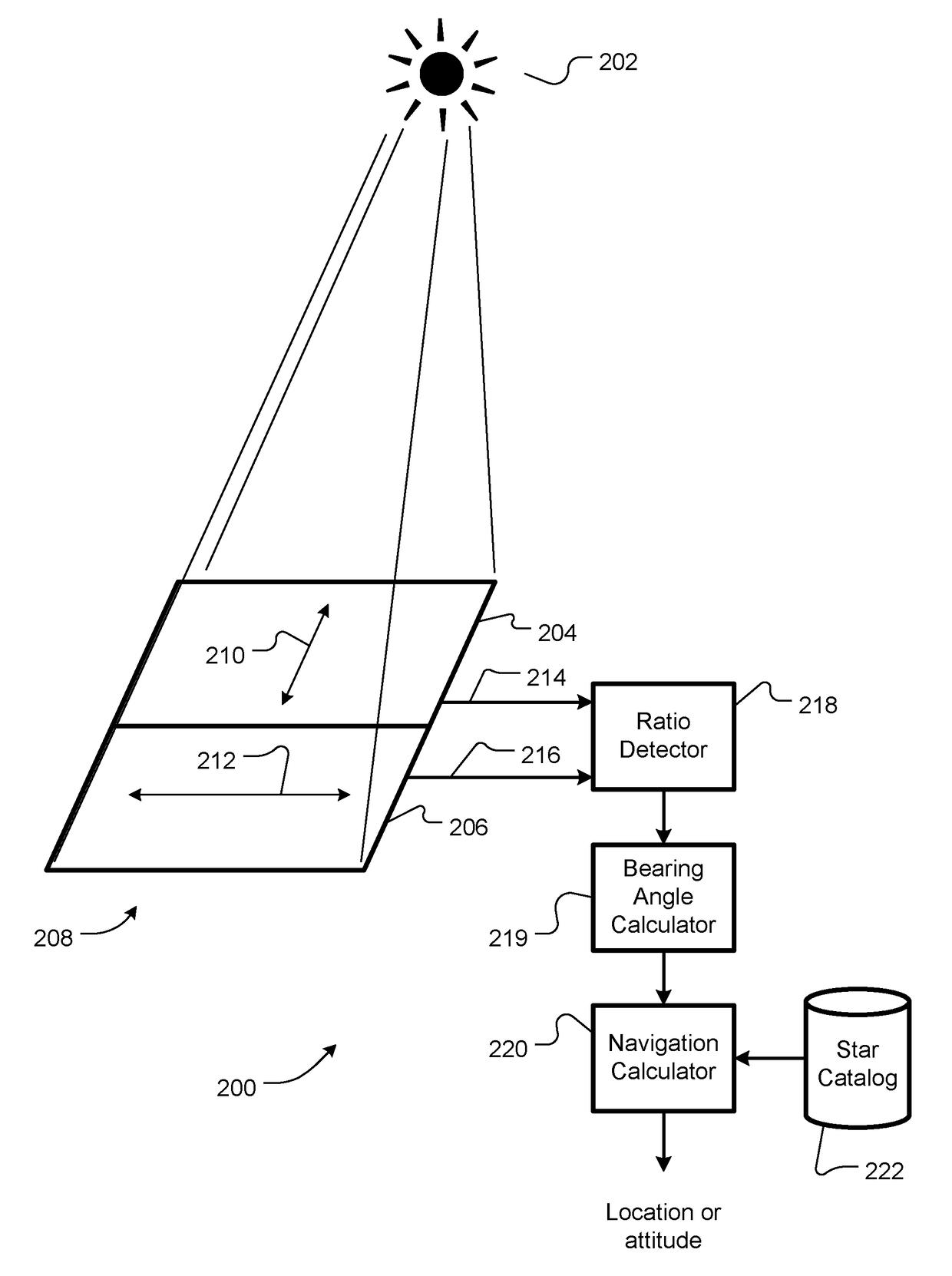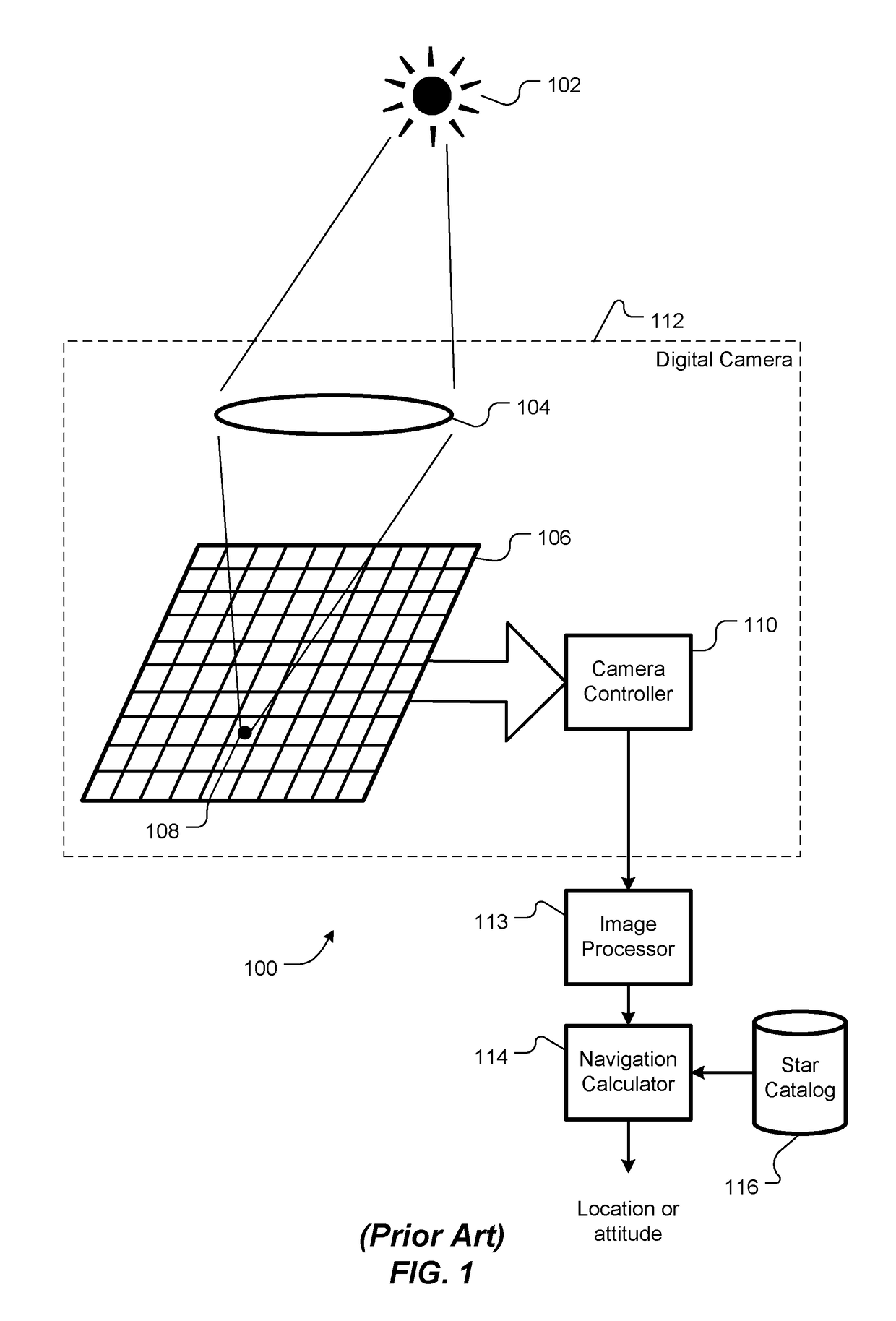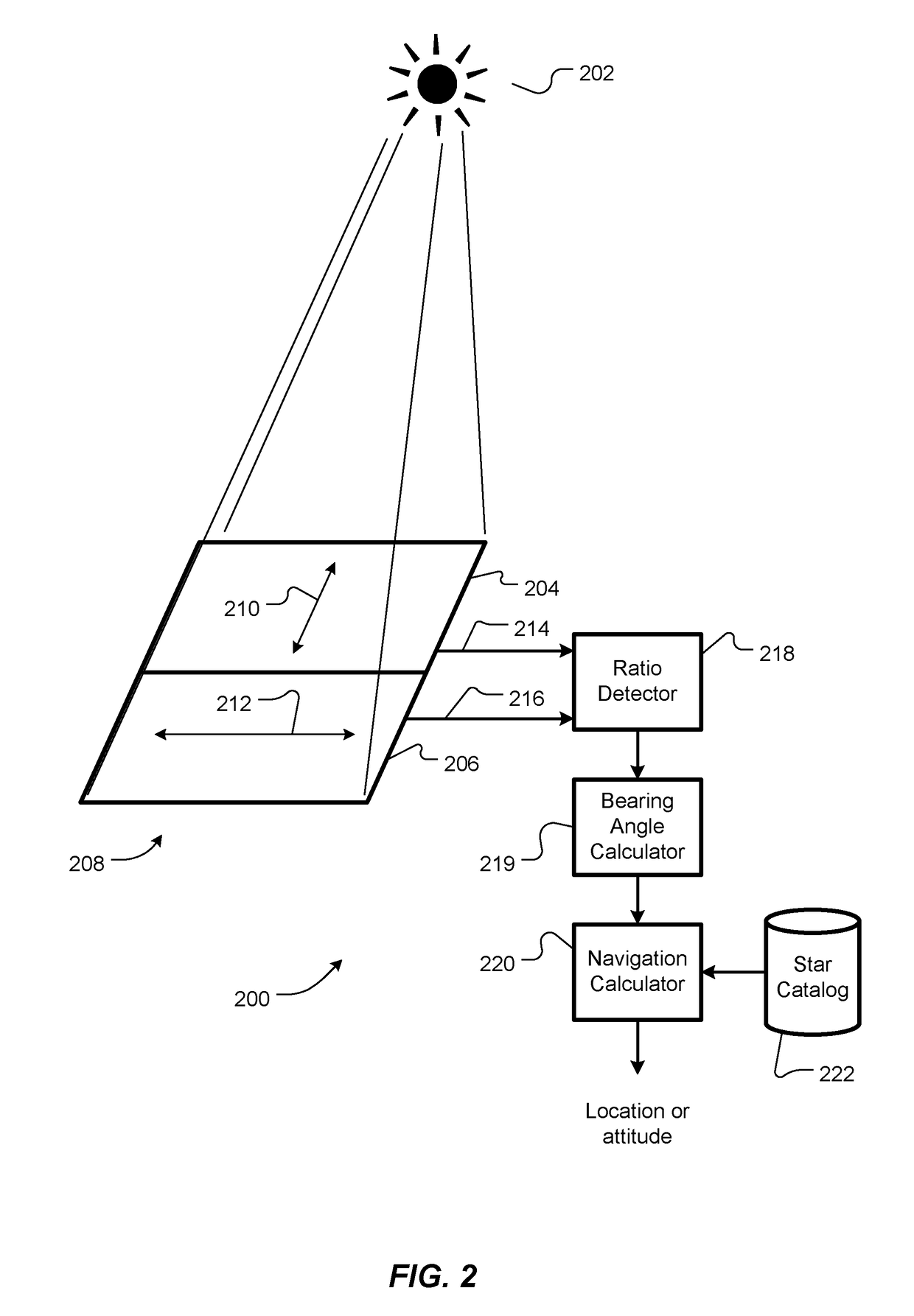Star tracker
a star tracker and tracker technology, applied in the field of star trackers, can solve the problems of limiting the number of navigational stars that may be used, aiming a star tracker, and consuming a significant fraction of electrical power
- Summary
- Abstract
- Description
- Claims
- Application Information
AI Technical Summary
Benefits of technology
Problems solved by technology
Method used
Image
Examples
Embodiment Construction
[0009]An embodiment of the present invention provides a method for determining a direction to a source of unpolarized electromagnetic radiation. The method includes exposing a first sensor to the unpolarized electromagnetic radiation. The first sensor is primarily sensitive to electromagnetic radiation polarized along a first axis. The first sensor is configured to generate a first signal proportional to a magnitude of the unpolarized electromagnetic radiation detected by the first sensor. The method also includes exposing a second sensor to the unpolarized electromagnetic radiation. The second sensor is primarily sensitive to electromagnetic radiation polarized along a second axis. The second axis is different than the first axis. The second sensor is configured to generate a second signal proportional to a magnitude of the unpolarized electromagnetic radiation detected by the second sensor. The method also includes determining a ratio of the first signal to the second signal. An a...
PUM
 Login to View More
Login to View More Abstract
Description
Claims
Application Information
 Login to View More
Login to View More - R&D
- Intellectual Property
- Life Sciences
- Materials
- Tech Scout
- Unparalleled Data Quality
- Higher Quality Content
- 60% Fewer Hallucinations
Browse by: Latest US Patents, China's latest patents, Technical Efficacy Thesaurus, Application Domain, Technology Topic, Popular Technical Reports.
© 2025 PatSnap. All rights reserved.Legal|Privacy policy|Modern Slavery Act Transparency Statement|Sitemap|About US| Contact US: help@patsnap.com



